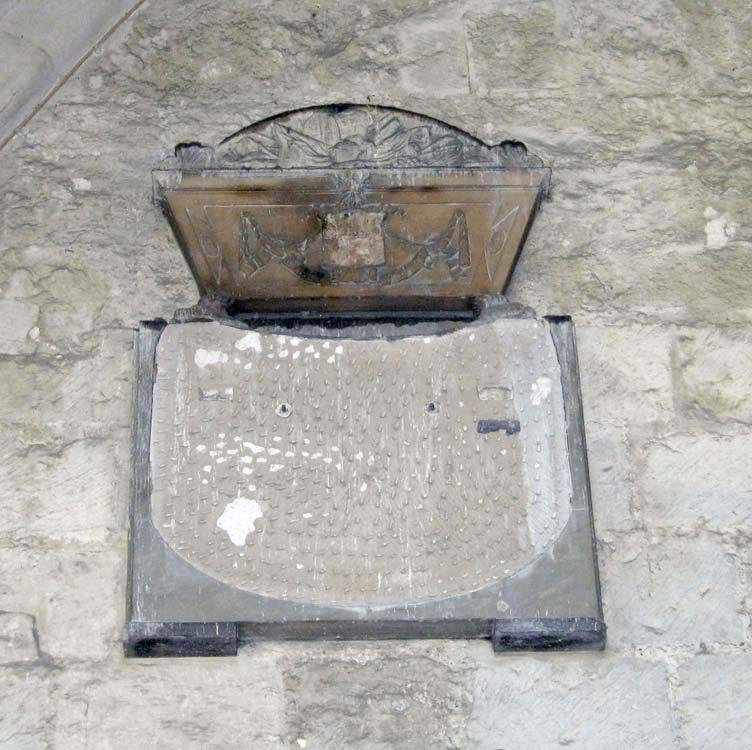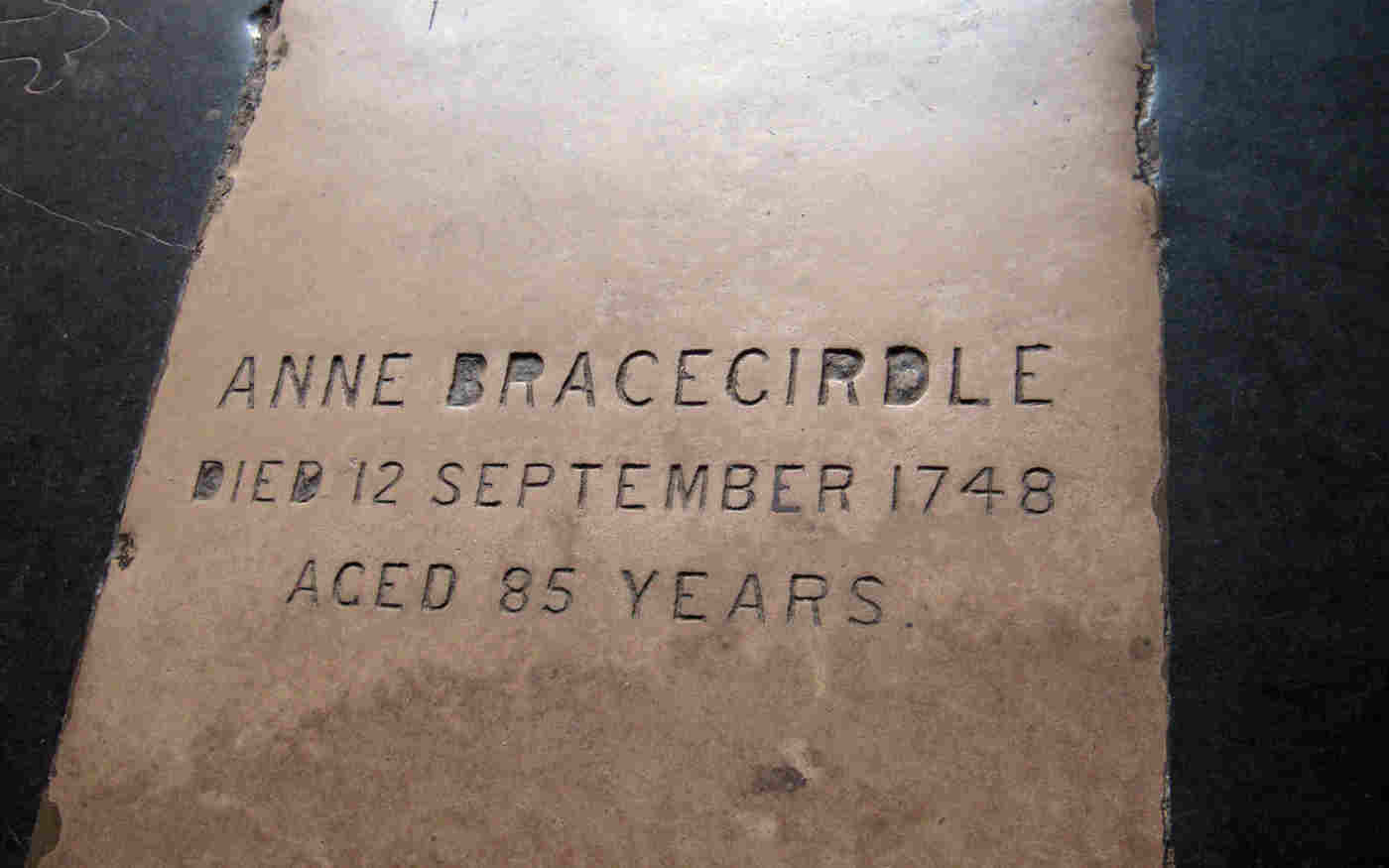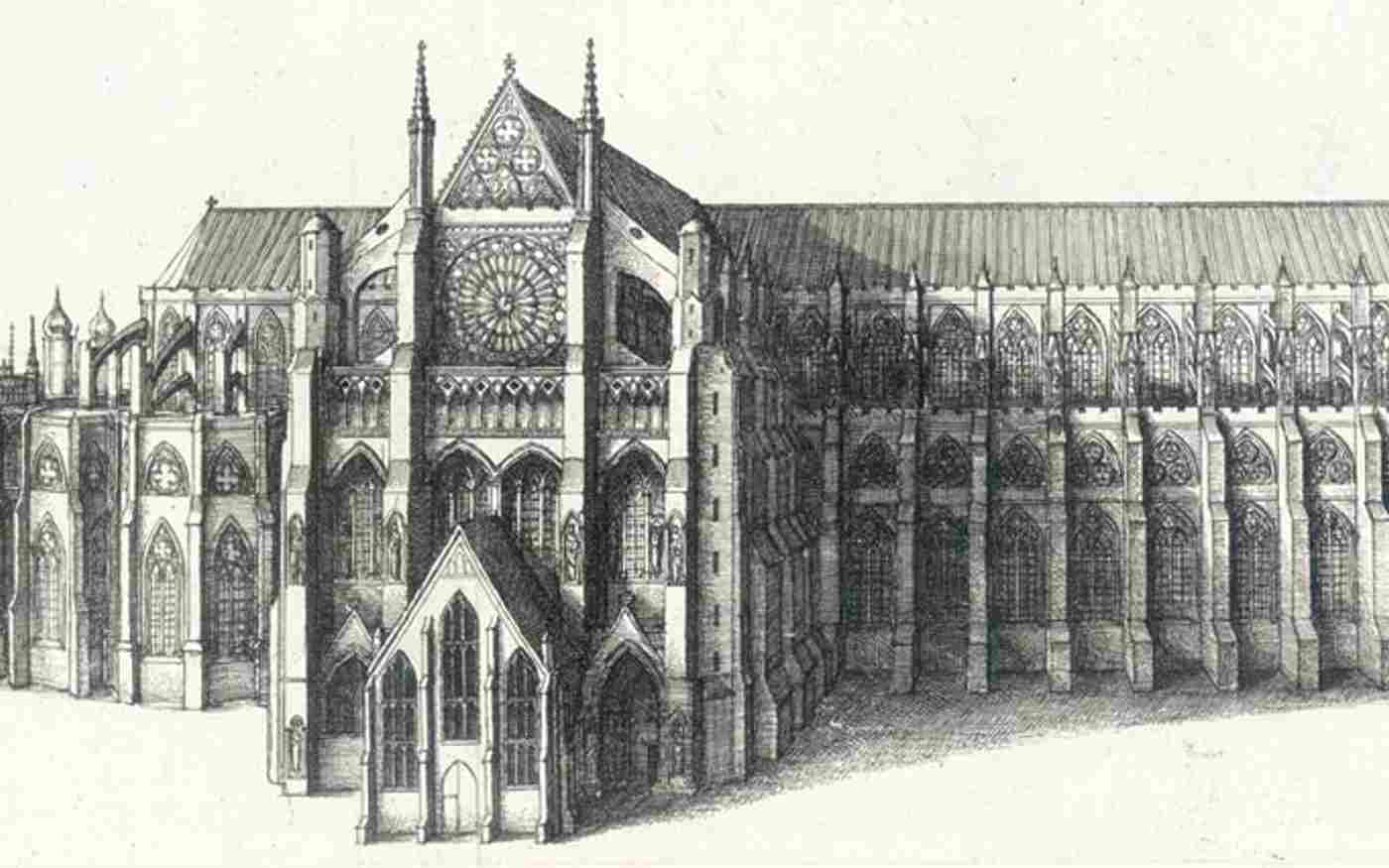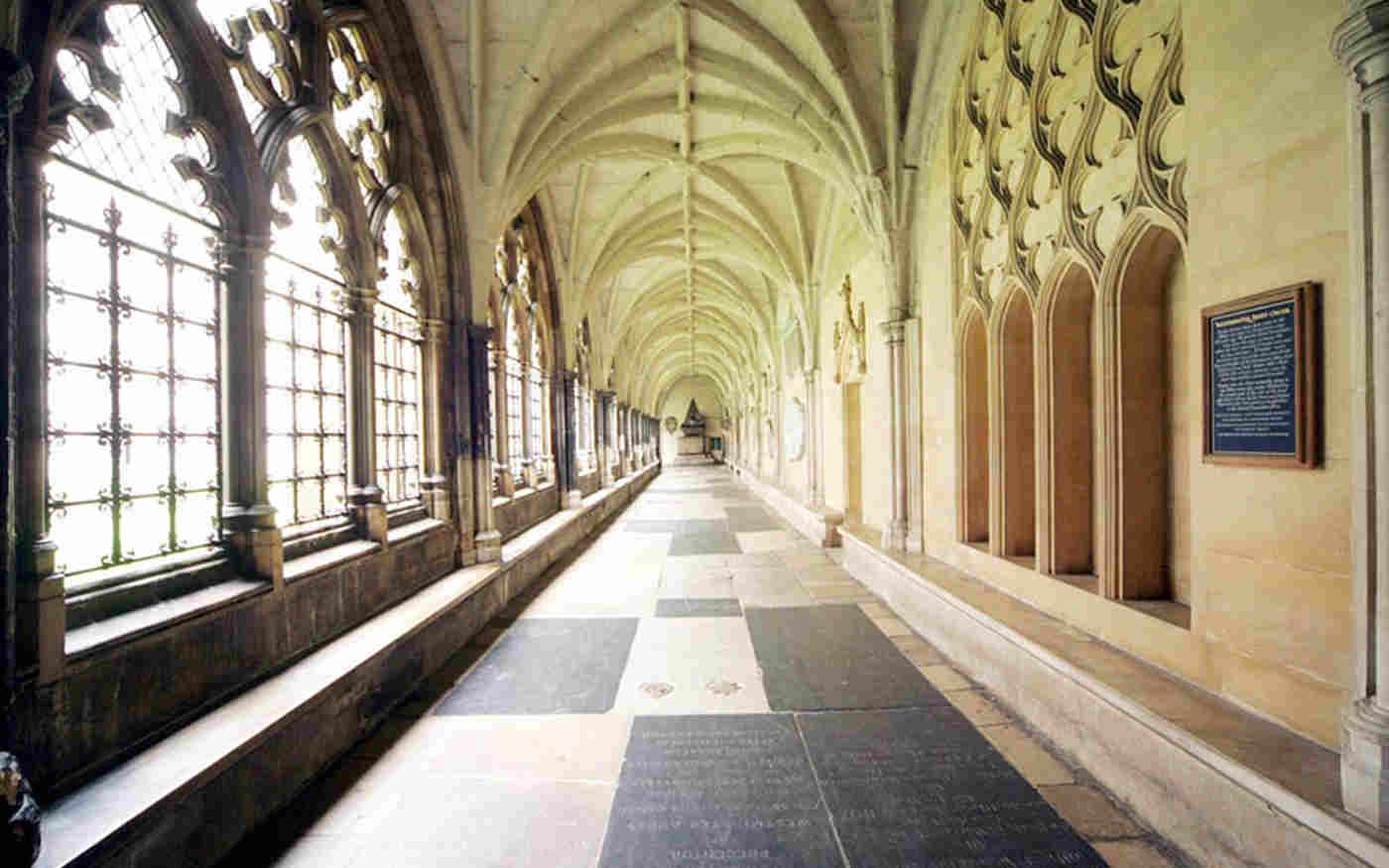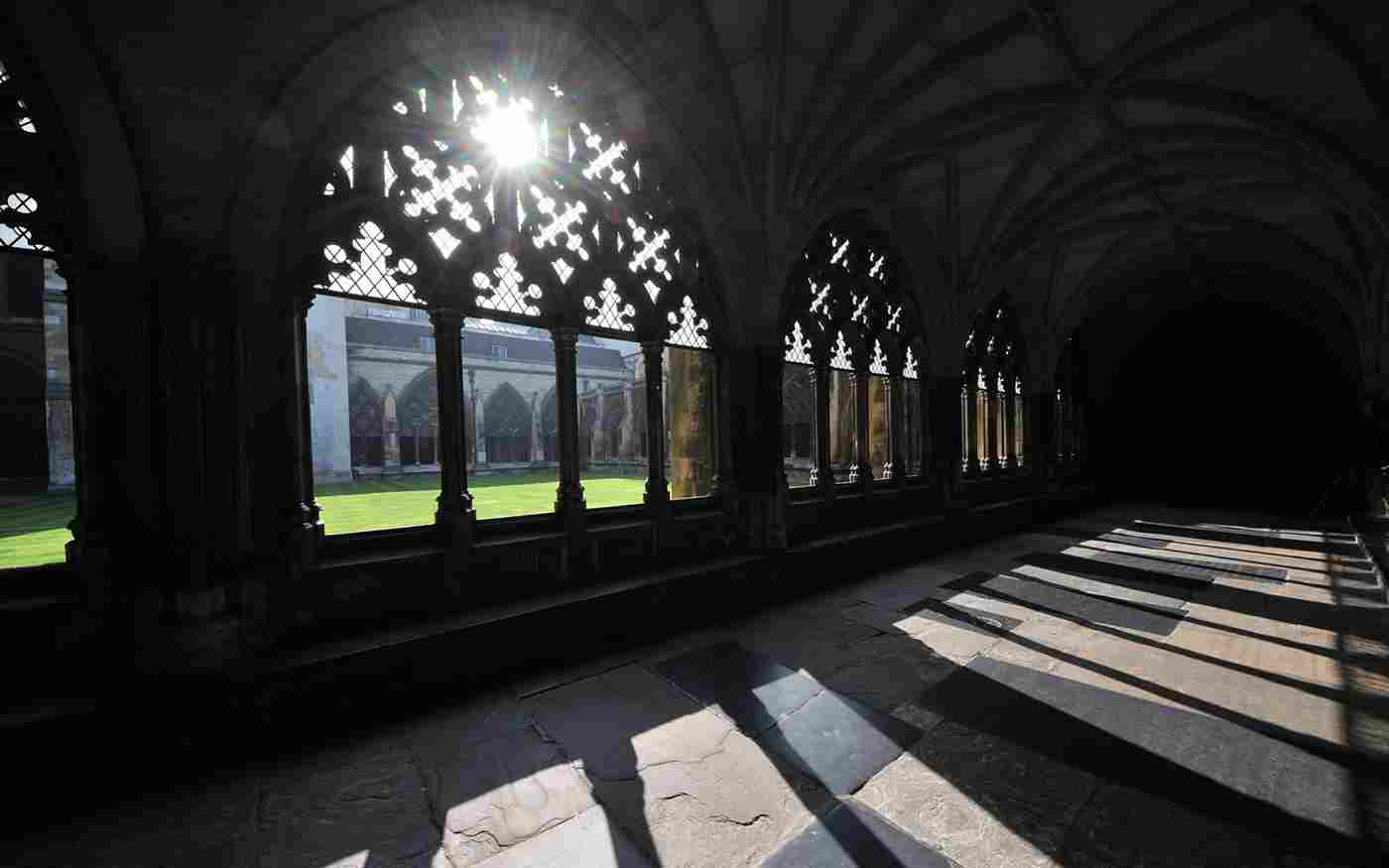Edmond Halley
In the south cloister of Westminster Abbey is a memorial to astronomer Edmond Halley. It takes the form of a stylised comet, of Bombay slate, the tail being gilded. In the centre of the head of the comet is a representation of the Giotto spacecraft. It was unveiled on 13th November 1986 by the Astronomer Royal, Professor Sir Francis Graham Smith. A book recording the names of the subscribers to the memorial is housed in the Abbey's archives. The sculptor was Richard Kindersley.
Around the head of the comet is the gilded inscription:
Edmond Halley 1656-1742
and in red:
This memorial marks the comet's return in 1986 intercepted by the European spacecraft Giotto built by British Aerospace.
On the tail in red letters:
First to predict the return of the comet named after him
Second Astronomer Royal
Fellow and Secretary of the Royal Society
Sponsor of Sir Isaac Newton's Principia
Editor of Philosophical Transactions
Savilian Profess of Geometry Oxford
Oceanographer Meteorologist Geophysicist
Inventor Navigator and famed for
his researches in determining longitude
He laid the actuarial foundations of life assurance
Edmond was born in October 1656 at Haggerston, a suburb of London, a son of Edmond and his first wife Anne. His father was a member of the Salter's Company and a yeoman warder at the Tower of London but was found murdered in 1684. He attended St Paul's School and Queen's College, Oxford. Halley began his astronomical studies while at university and corresponded with John Flamsteed, and Christopher Wren and Robert Hooke knew him. He travelled to the island of St Helena to observe stars in the southern hemisphere and then went to France and Italy and observed a bright comet in November 1680. He became a skilled navigator and inventor and improved the diving bell. His most influential work was to calculate the orbits of over twenty comets and he charted terrestrial magnetism, observing the 1715 eclipse of the sun in London. In 1721 he was appointed Astronomer Royal and was first to predict the return in 1758 of the periodic comet which now bears his name. He married Mary Tooke in 1682 and in the same year met Sir Isaac Newton. Their children were Edmond, who became a naval surgeon, Margaret and Katherine. Halley died at Greenwich on 14th January 1742 and was buried with his wife in St Margaret's church, Lee in Kent, near to his observatory.
Further reading
Oxford Dictionary of National Biography 2004
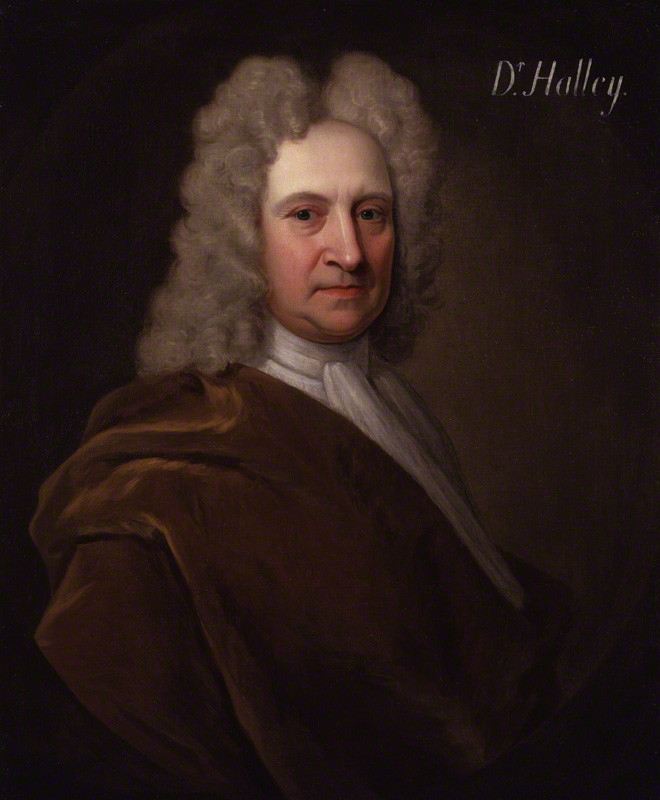
By Richard Phillips (1681-1741) [Public domain], via Wikimedia Commons
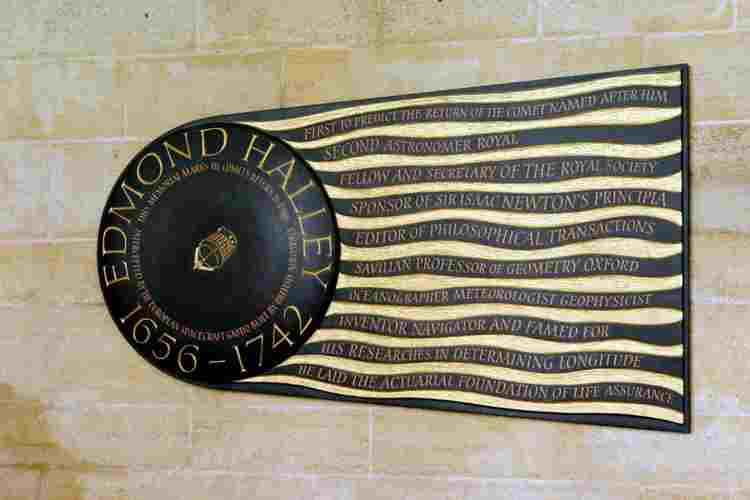
This image can be purchased from Westminster Abbey Library
Image © 2026 Dean and Chapter of Westminster

